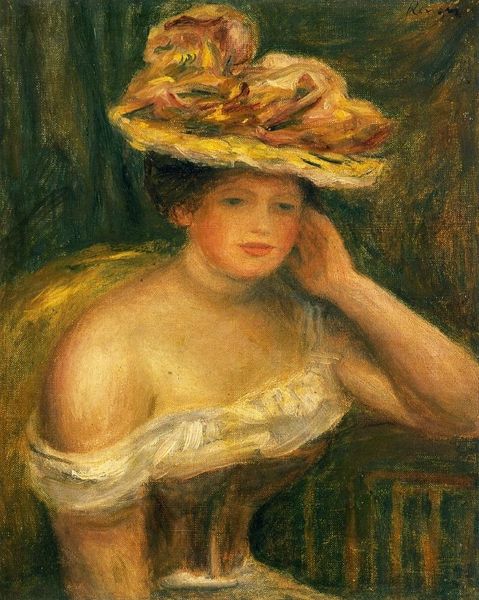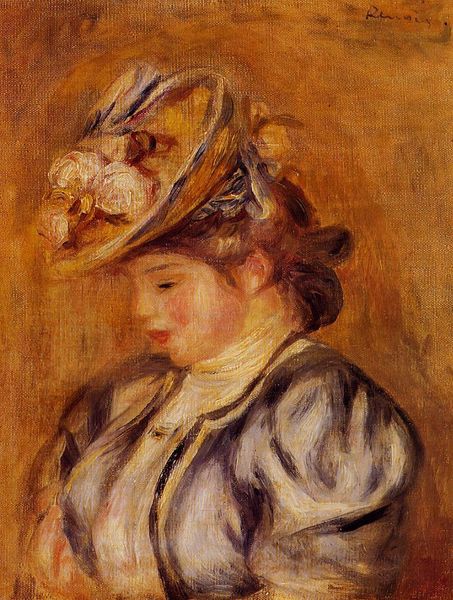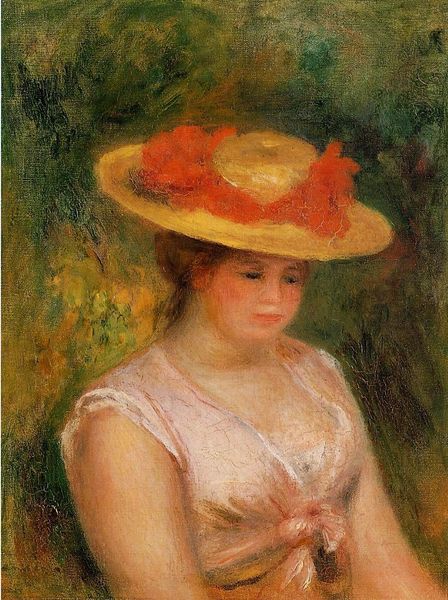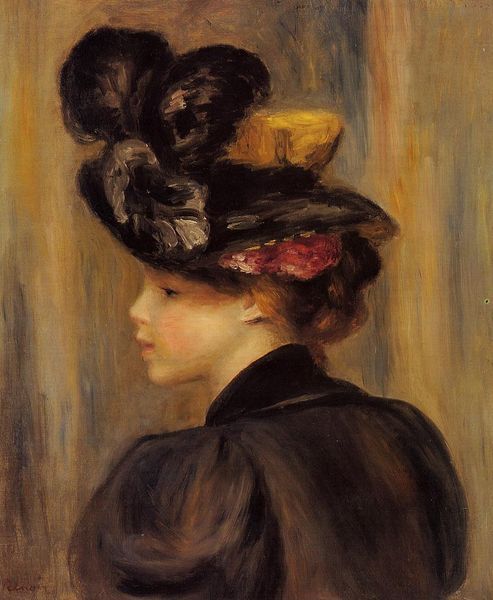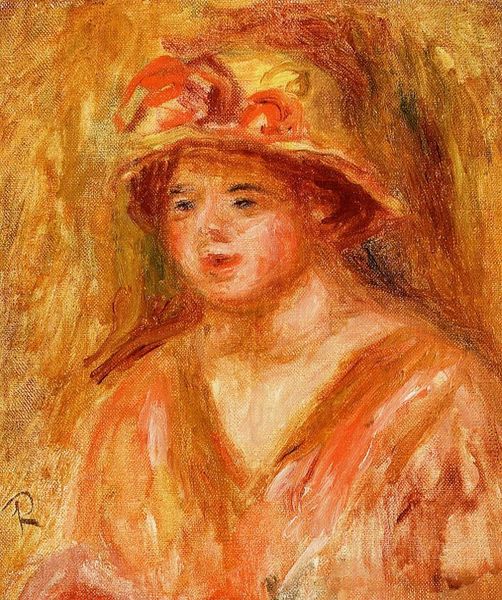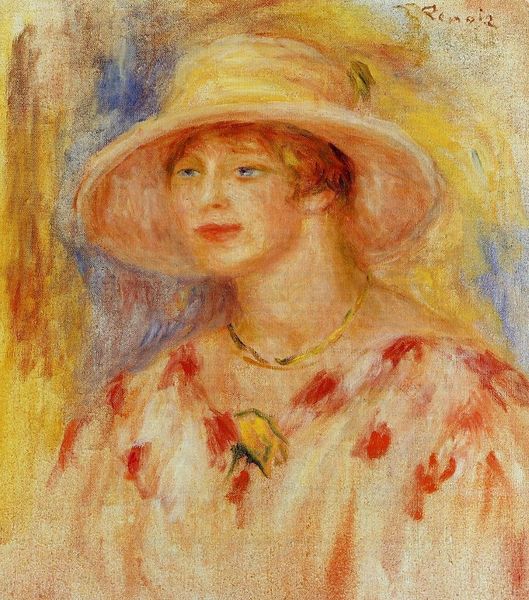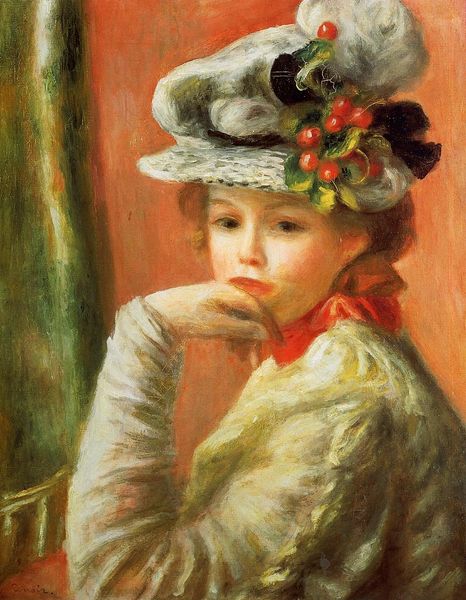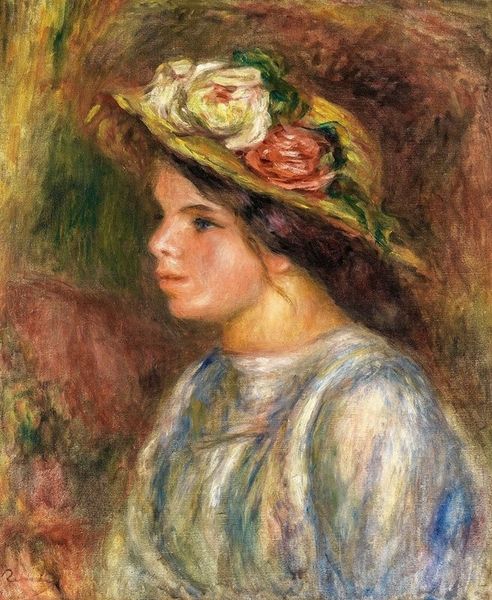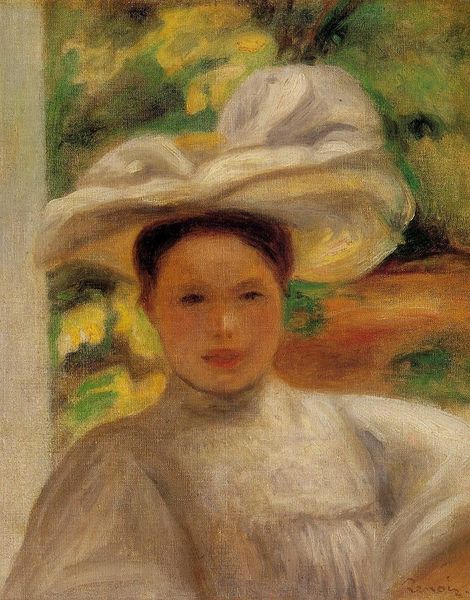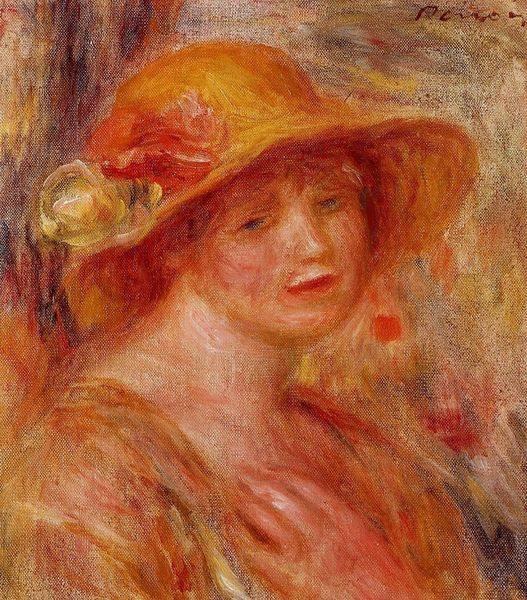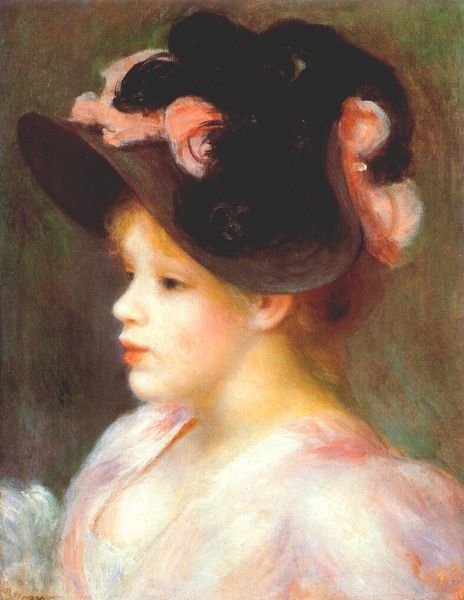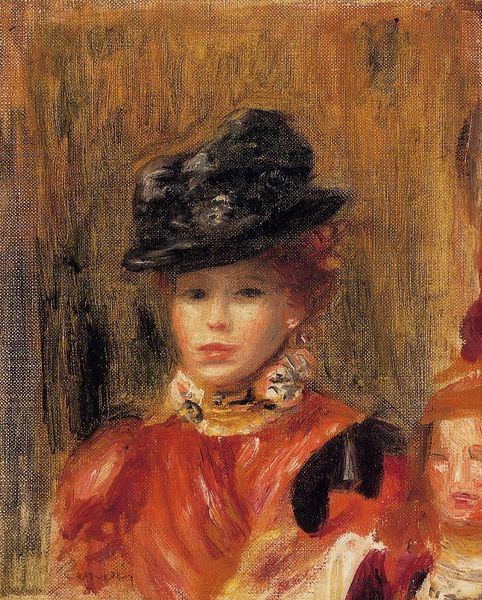
Copyright: Public domain
Curator: Looking at Pierre-Auguste Renoir's "Head of a Woman," created in 1913, the overall feeling is one of delicate warmth, almost fragile. Editor: Yes, it’s soft, isn't it? There's an intimate feeling about it; the kind of fleeting, gentle moment Renoir so excelled at capturing. How do you see it within the historical and social context? Curator: Considering it was painted in 1913, toward the end of Renoir's life, we have to view it alongside his struggles with rheumatoid arthritis. The softness you perceive isn't just aesthetic; it's also born of physical limitations. His brushstrokes became broader, more suggestive. His challenges offer a distinct lens to see the intersection of his biography and artistic output and perhaps informs its broader accessibility and appeal to a contemporary audience. Editor: That’s a really compelling point. Thinking of his audience at the time though, do you see any tensions between these constraints on the artist versus the institutional art world expecting, perhaps, ever greater displays of technical skill and mastery? Was this late-period style received as a genuine shift or, at least initially, with some suspicion? Curator: I think initially there must have been some mixed reactions. It’s less about capturing every detail and more about suggesting an overall impression. Notice how the textures of the clothing almost blend into the background. It pushes against the prevailing notions of academic artistry and shifts the power dynamic of representation, blurring the lines between figure and environment, subject, and artist. It asks us to question how we define the gaze and the value of artistic expression in the face of adversity. Editor: And that large, almost floating bow! How does it serve to frame or perhaps even free the sitter within those limitations you have identified? Curator: Precisely. It is less a mere detail and more a statement about freedom of form. In this regard, Renoir is exploring the tension between individual experience, gendered expectations, and his own increasingly impressionistic vision. It is powerful because it opens up these discussions about what we see when we look, how gender informs perception, and the lived experience of a person with a disability at the time. Editor: I agree completely. The visible brushstrokes really communicate this evolution within Renoir’s oeuvre. There’s a sense of him breaking from expectation, despite the art world that sought to define him. Curator: Exactly. In essence, it’s not just a portrait, but an interrogation of the portrait genre itself and of artistic boundaries. Editor: It's remarkable how much that socio-historical lens amplifies our viewing of it today, right? Curator: Absolutely, I am left reflecting on his own challenges while reevaluating historical power structures.
Comments
No comments
Be the first to comment and join the conversation on the ultimate creative platform.
